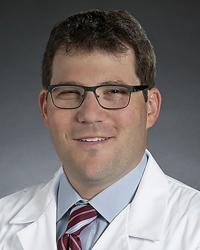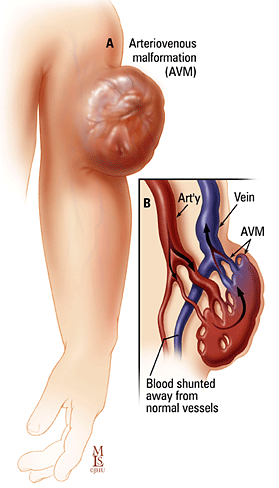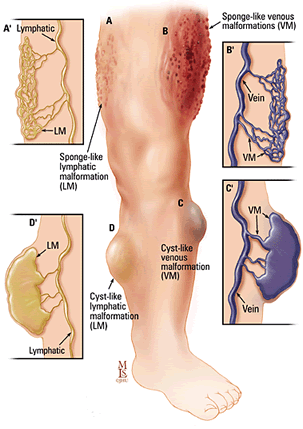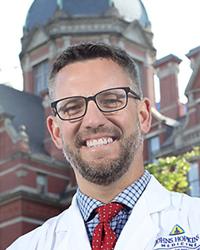Clifford Raabe Weiss, MD

- Director, the Johns Hopkins HHT Center of Excellence
- Professor of Radiology and Radiological Science
Because of the fact that vascular malformations are rare and because of the precision required to treat them, our interventional radiologists work within the Vascular Anomalies Center to offer patients individualized treatment plans.
Vascular malformation is a general term that includes congenital vascular anomalies of only veins, only lymph vessels, both veins and lymph vessels, or both arteries and veins.

These are all present at birth and become apparent at different ages. We are just beginning to understand how malformations occur. The pulmonary arteriovenous malformation, when associated with Hereditary Hemorrhagic Telangiectasia (HHT), is inherited genetically. There is currently much work being done on the possible genetics of other malformations. Most are only known as something that occurs during development of the arteries, veins, and/or lymph vessels, but without specific cause.
These vascular malformations can cause a variety of symptoms depending on the location in the body:
Venous malformation may cause pain where ever they are located. Venous and lymphatic malformations may cause a lump under the skin. There may be an overlying birthmark on the skin. Bleeding or lymph fluid leaking may occur from skin lesions. Lymphatic malformations tend to become infected, requiring repeated antibiotic treatments. Venous and lymphatic malformations may be associated with a syndrome called Klippel-Trenaunay Syndrome.

Arteriovenous malformations may cause pain. They are also more stressful on the heart because of the rapid shunting of blood from arteries to veins. Depending on their location, they may also result in bleeding (for example from the bowels, from the uterus or from the bladder).
Hemangioma is another common term used for vascular anomalies. However, this name actually applies to a childhood vascular anomaly that has a rapid growth phase between birth and 3 months of age. These will resolve completely by age 7. The major reason for us to treat these is for low platelets that do not respond to medical treatment, or in the liver because of massive shunting with a strain on the heart.
Pulmonary arteriovenous malformations (PAVMs) are somewhat different in that they shunt blood from the right heart system to the left heart system without picking up oxygen in the lungs. This results in symptoms of low oxygen, shortness of breath, fatigue. These malformations may also bleed, resulting in coughing up blood or blood in the chest. Also, these pulmonary artery to pulmonary vein shunts can allow clots to pass through the lungs and travel to the arteries in the body, with risk for stroke or brain abscess. This is a very significant reason to block these shunts in anyone who has a non inherited pulmonary arteriovenous malformation (PAVM) or anyone who has inherited PAVMs with the syndrome of HHT [HHT has another name: OWR - Osler Weber Rendu].
Watch: Embolization of Pulmonary Arteriovenous Malformations ©2015 Caitlin Mock



Quality-of-life and patient-reported outcome measures are an important part of clinical and outcomes assessments. The Patient Reported Outcome Measure for Vascular Malformation (PROVAM) questionnaire assesses health-related quality of life in patients with vascular malformations both before and after treatment to help guide clinical decision-making.
PROVAM Questionnaire
The PROVAM Questionnaire has been copyrighted by the Johns Hopkins University. To use PROVAM for research, clinical, or commercial purposes, please email Dr. Clifford Weiss at [email protected].